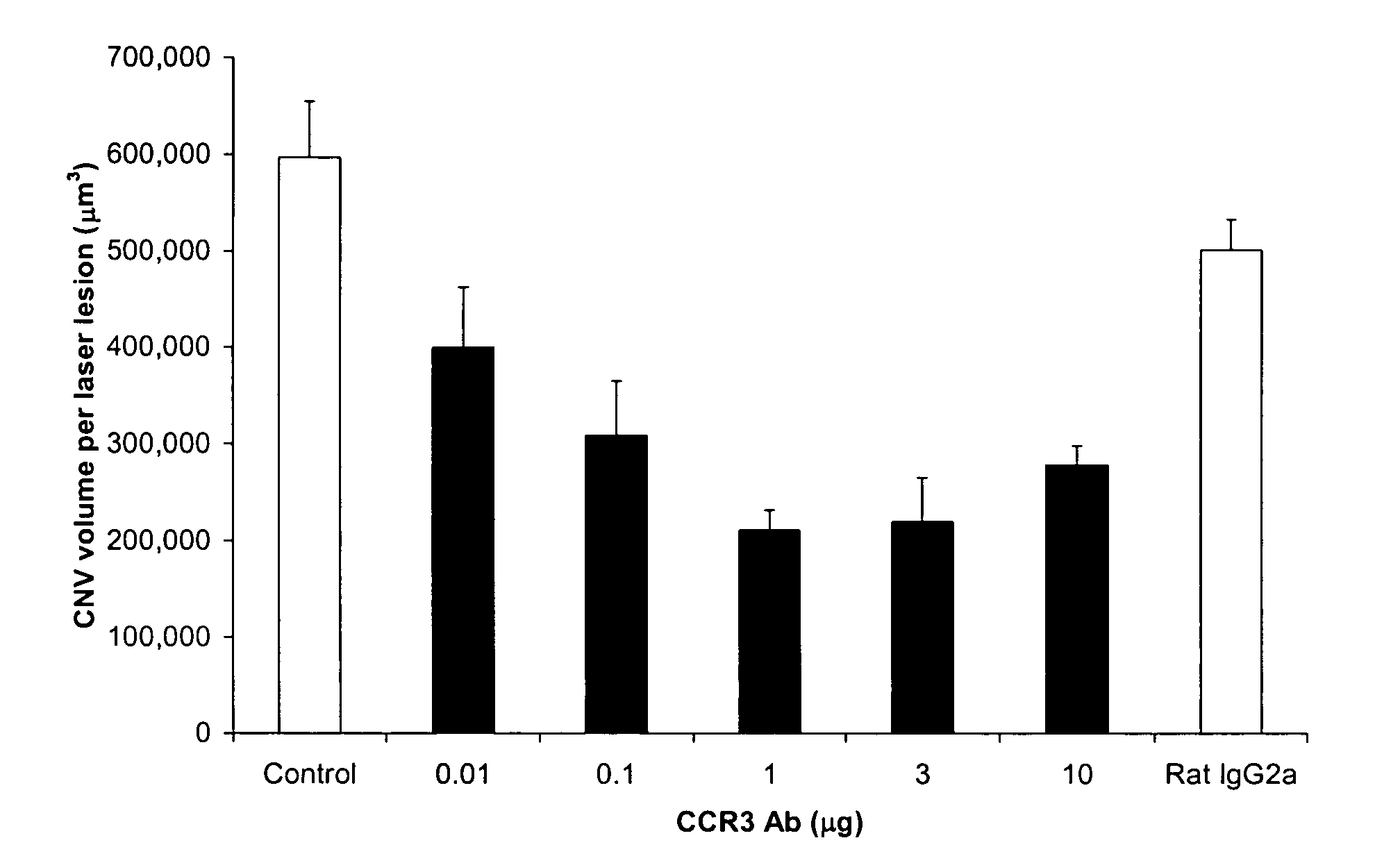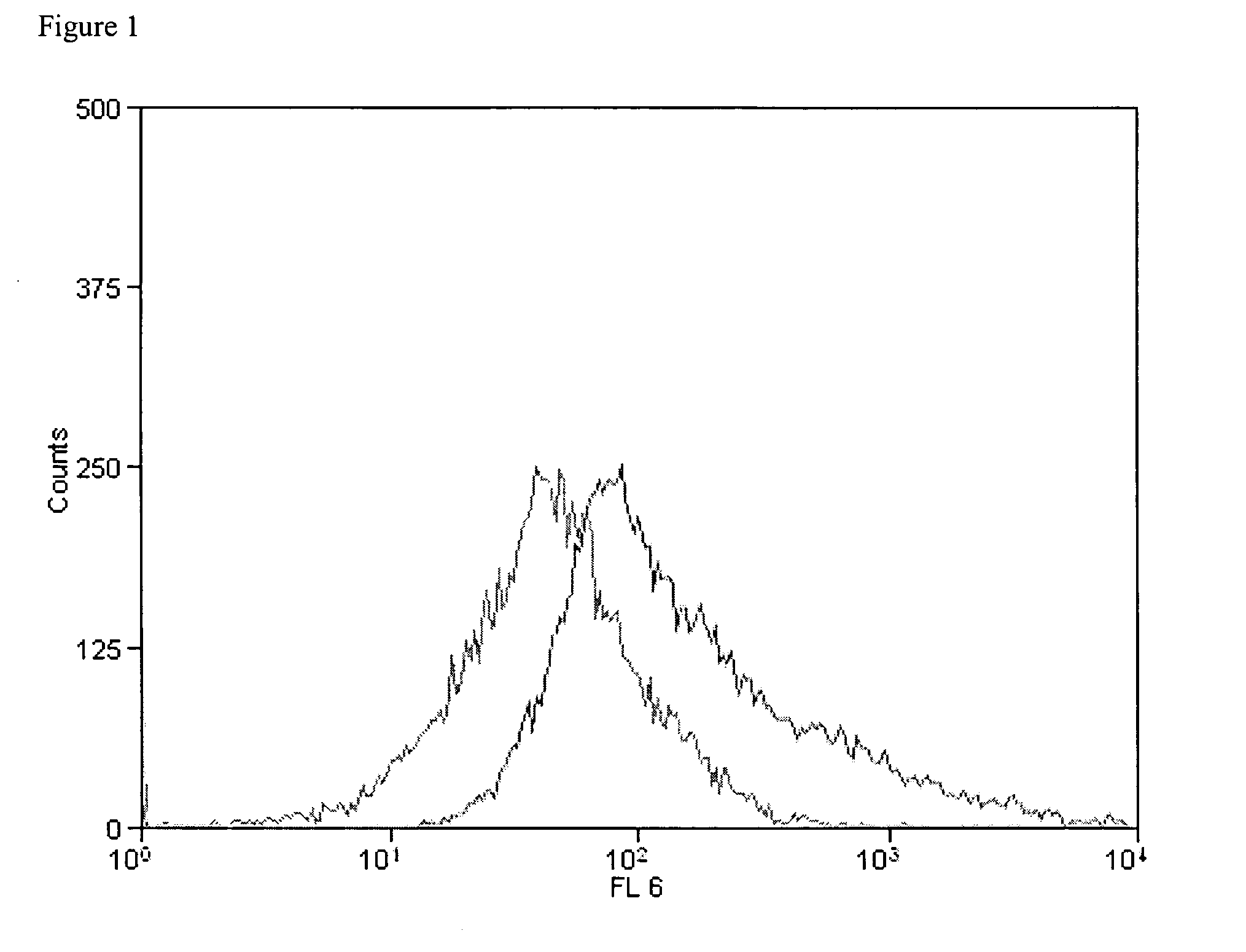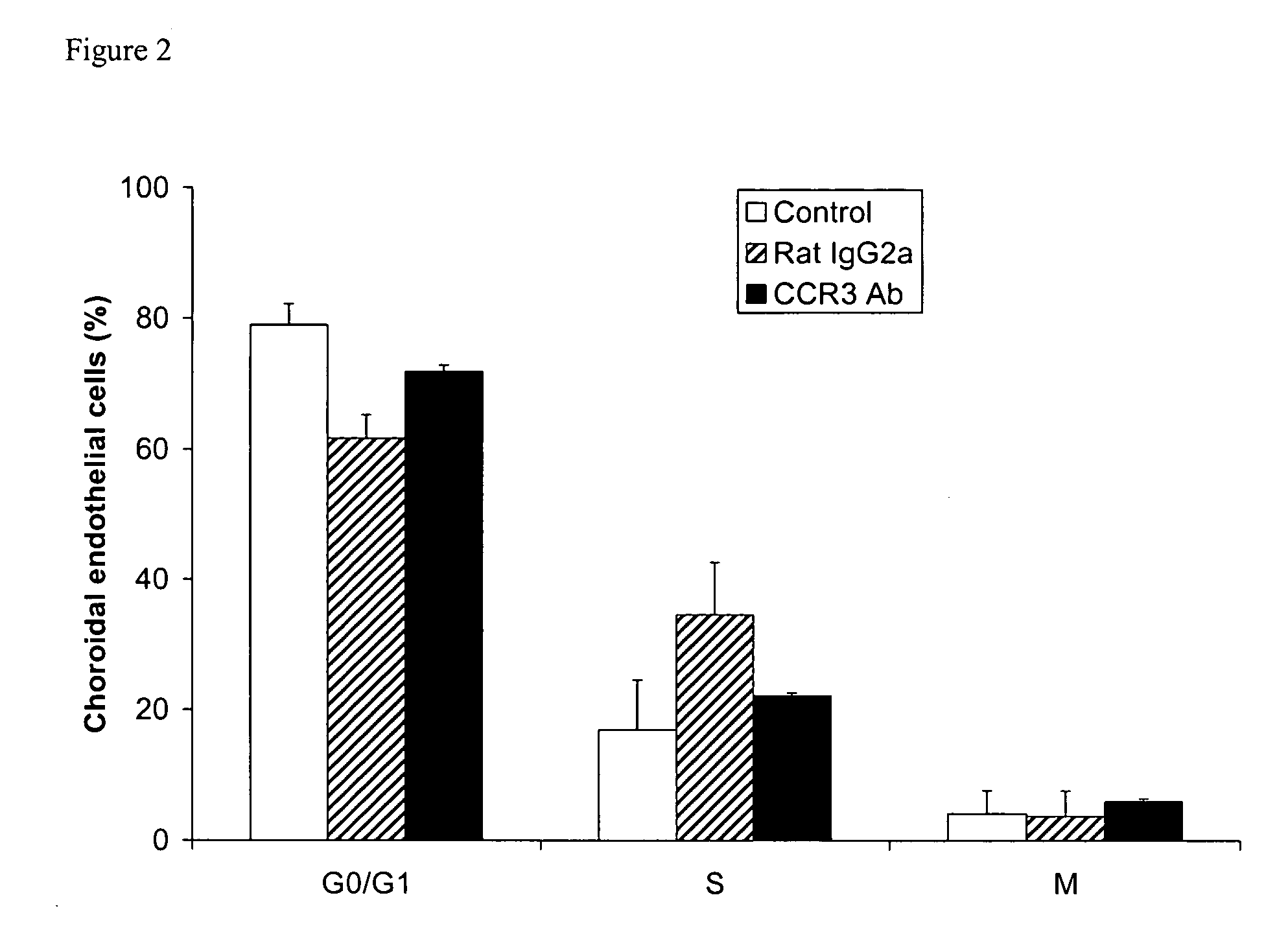CCR3 inhibition for ocular angiogenesis and macular degeneration
a technology of ocular angiogenesis and ccr3, which is applied in the field of ocular angiogenesis suppression, can solve the problems of severe vision loss in people, loss of central vision, and macular degeneration, and achieve the effect of inhibiting ocular angiogenesis and inhibiting the activity of ccr3
- Summary
- Abstract
- Description
- Claims
- Application Information
AI Technical Summary
Benefits of technology
Problems solved by technology
Method used
Image
Examples
example 1
Methods
[0037] Laser photocoagulation (532 nm, 200 mW, 100 ms, 75 μm) (OcuLight GL, Iridex Corporation) was performed (volume studies: 3 / eye; protein analyses / flow cytometry: 12 / eye) on both eyes of each animal to induce CNV (choroidal neovascularization). CNV volumes were measured by scanning laser confocal microscope (TCS SP, Leica) with 0.5% FITC-Griffonia simplicifolia Isolectin B4 (Vector Laboratories). CNV was induced by laser injury in C57BL / 6J and Ccr− / − mice and volumes measured 7 days later by confocal evaluation of Griffonia simplicifolia Isolectin B4 staining of RPE-choroid flatmounts. Neutralizing antibodies (Ab) against CCR3, eotaxin (CCL-11), eotaxin-2 (CCL-24), RANTES, MCP-3 or control goat IgG or rat IgG2a were injected into the vitreous humor following injury.
[0038] Flow cytometry was used to determine the numbers of eosinophils, mast cells and macrophages in the choroid, expression of CCR3 by various cell types in the eye, and the cell cycle state of choroidal en...
PUM
| Property | Measurement | Unit |
|---|---|---|
| Molecular weight | aaaaa | aaaaa |
Abstract
Description
Claims
Application Information
 Login to View More
Login to View More - R&D
- Intellectual Property
- Life Sciences
- Materials
- Tech Scout
- Unparalleled Data Quality
- Higher Quality Content
- 60% Fewer Hallucinations
Browse by: Latest US Patents, China's latest patents, Technical Efficacy Thesaurus, Application Domain, Technology Topic, Popular Technical Reports.
© 2025 PatSnap. All rights reserved.Legal|Privacy policy|Modern Slavery Act Transparency Statement|Sitemap|About US| Contact US: help@patsnap.com



